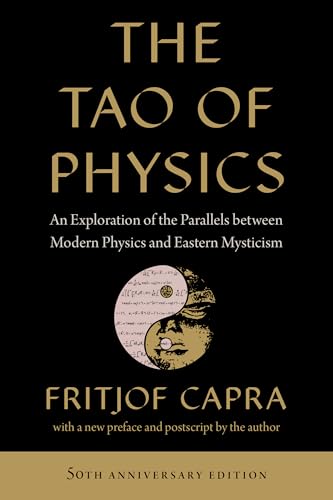The Tao of Physics: An Exploration of the Parallels between Modern Physics and Eastern Mysticism
amazon.com
The Tao of Physics: An Exploration of the Parallels between Modern Physics and Eastern Mysticism

The monistic and organic view of the Milesians was very close to that of ancient Indian and Chinese philosophy, and the parallels to Eastern thought are even stronger in the philosophy of Heraclitus of Ephesus. Heraclitus believed in a world of perpetual change, of eternal “Becoming.” For him, all static Being was based on deception, and his
... See moreAnother well-known example of spontaneous intuitive insights are jokes. In the split second where you understand a joke you experience a moment of “enlightenment.” It is well known that this moment must come spontaneously, that it cannot be achieved by “explaining” the joke, that is, by intellectual analysis. Only with a sudden intuitive insight
... See moreThe basic aim of these techniques seems to be to silence the thinking mind and to shift the awareness from the rational to the intuitive mode of consciousness. In many forms of meditation, this silencing of the rational mind is achieved by concentrating one’s attention on a single item, like one’s breathing, the sound of a mantra, or the visual
... See moreThe two basic themes of this conception are the unity and interrelation of all phenomena and the intrinsically dynamic nature of the universe. The further we penetrate into the submicroscopic world, the more we shall realize how the modern physicist, like the Eastern mystic, has come to see the world as a system of inseparable, interacting, and
... See moreAll physical events are reduced, in Newtonian mechanics, to the motion of material points in space, caused by their mutual attraction, that is, by the force of gravity. In order to put the effect of this force on a mass point into a precise mathematical form, Newton had to invent completely new concepts and mathematical techniques, those of
... See moreEastern mysticism is based on direct insights into the nature of reality, and physics is based on the observation of natural phenomena in scientific experiments. In both fields, the observations are then interpreted, and the interpretation is very often communicated by words. Since words are always an abstract, approximate map of reality, the
... See moreThis property of matter and of light is very strange. It seems impossible to accept that something can be, at the same time, a particle—that is, an entity confined to a very small volume—and a wave, which is spread out over a large region of space. This contradiction gave rise to most of the koan-like paradoxes which finally led to the formulation
... See moreAlthough other schools of Eastern mysticism are less extreme, the direct mystical experience is at the core of all of them. Even those mystics who are engaged in the most sophisticated argumentation never see the intellect as their source of knowledge but use it merely to analyze and interpret their personal mystical experience. All knowledge is
... See moreJoseph Needham repeatedly brings the empirical attitude of Taoists into prominence in his work Science and Civilisation in China and finds that this attitude has made Taoism the basis of Chinese science and technology. The early Taoist philosophers, in Needham’s words, “withdrew into the wilderness, the forests and mountains, there to meditate upon
... See more